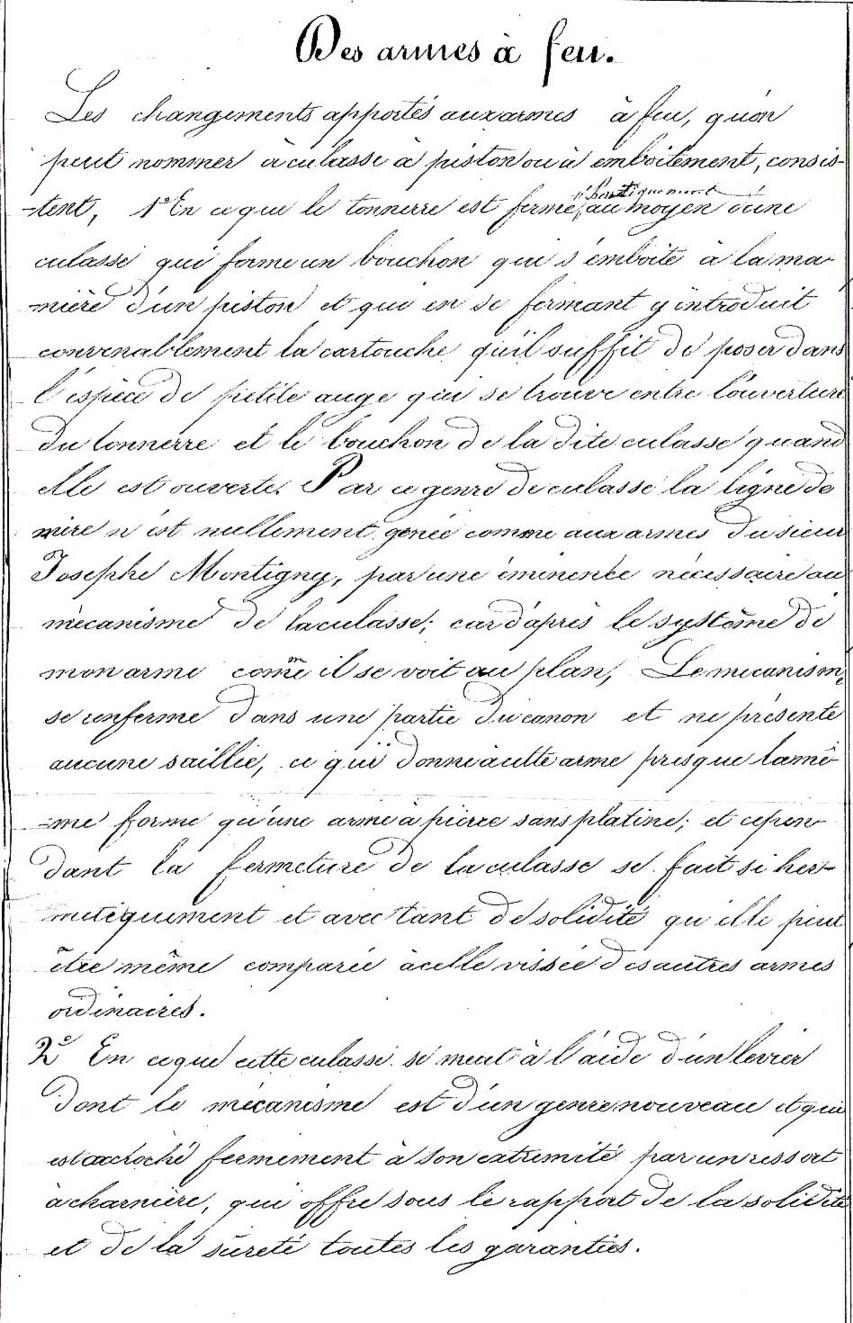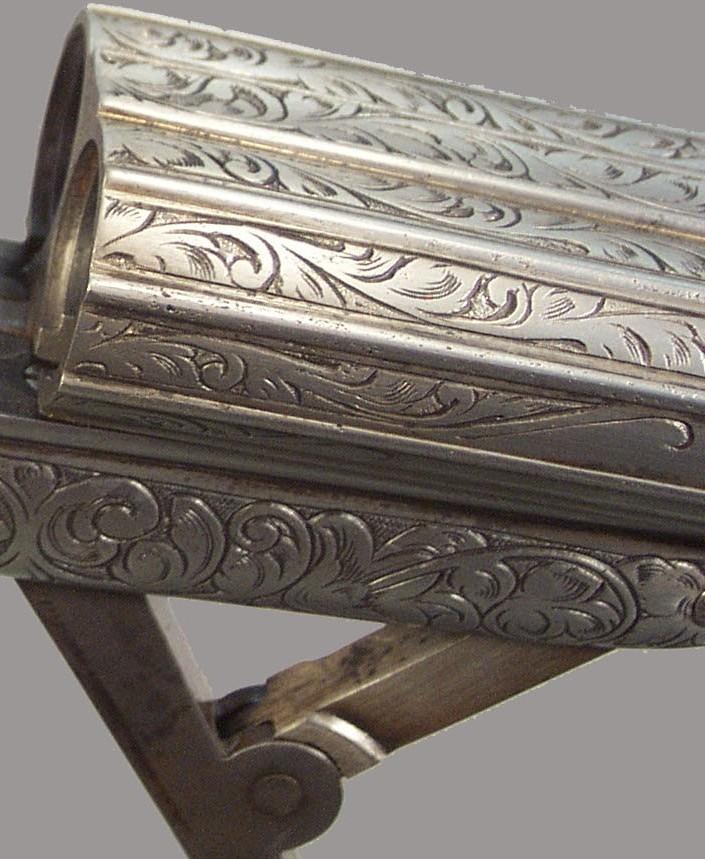Some of the most beautiful work of this craftsman, and many others, are in this book “Liège Gunmakers through their Work. 1800 - 1950”.
For more detail see: LIEGE GUNMAKERS
Bastin Frères
This weapon, according to any probability, was manufactured by Bastin according to an initial patent of Pierre Camille Montigny.
One of the patents deposited by Bastin is entitled besides: Improvement brought to the Montigny rifle.
Montigny Patent








BASTIN Frères
This is a breech loading hunting pistol by BASTIN Frères.
In the second part of the XIXe century, the production of arms in Liege was primarily turned towards export and in particular towards South America where several Liège arms manufacturers had founded trading posts in various capitals of this continent to sell these weapons with side by side double barrels much appreciated by the natives due to their moderate prices and simple operation.
Inventors
BASTIN Brothers arms manufacturer in Hermalle sous Argenteau (Liege) were registered with manufacturers of the of Liege proofhouse from 1848 to 1851.
They are known by three patents registered in Belgium from 1855 to 1874, namely
A breech loading rifle
Later modifications to this weapon.
Improvements brought to MONTIGNY rifle.
Patents
The Master patent registered at the clerk's office of the Liege provincial government on October 13, 1855 carries number 2149. It refers to the invention of a movable breech loading rifle barrel , a system adaptable to rifles and pinfire pistols.
The Patent of modification dated January 26, 1856 is also registered at the clerk's office of the Liege Provincial Government under number 2395.
Description and operation
This is a smooth bore12 gauge center fire pistol with juxtaposed barrels.
It could be described as a “pistolet de vénerie” . It is copied from same system as the BASTIN Frères shotgun, i.e an opening system using the lever hook located under the barrels. Only the pinfire mode of ignition was changed to central fire.
With the opening of the lever hook, the barrels separate from the percussion breech and slide forward, thus allowing access the chambers for the loading of cartridges and the extraction of the empties.
This gun is of late manufacture since it carries the countermarks of the proof house controllers used since 1877.
The frame is decorated with foliage engravings, as well as the octagonal barrel and the band connecting the barrels to the muzzle.
The banana-shaped stock consists of two grips attached together by two washers and a screw and ends in a metal cap with a ring.
They are also carved with foliage .
The BASTIN brothers blueprint is accompanied by a list in 16 points describing each part.
It is the list being reproduced on the patent of improvement of 1856. We transcript it hereunder with the syntax of the authors:
1 - Movable barrel.
2 - Square placed under the chamber of the barrel and going back in the part of the slide intended to receive it.
3 - Lever to move the barrel.
4 - Slide into which the barrel slides, seen before the installation under the barrel.
5 - Slide placed under the barrel, side view.
6 – Piece of the slide in which the square placed under the chamber returns.
7 - Part being used to maintain the barrel in its slide and in which comes stopping hook n° 10.
8 - Hinge in which the lever n° 3 is located.
9 - Bracket being used as point of support for the lever.
10 – Hook being used to stop the moving the barrel as well as lever.
11 - Spring working with hook n° 10.
Improvement
12 - Lock.
13 – Hammer withdrawing the cartridge case from the chamber by a hole made in front of its head.
14 - Head of hammer, seen from below, in which the pin of the cartridge engages.
15 - Cartridge pin.
16 – Cartridge case going out of the chamber by the effect of the lever n° 3.
In Hermalle sous Argenteau , January 26, 1856. (Signed) BASTIN BROTHERS.
STAMPS
The weapon carries the legal Liege proof house stamps, I.e:
ELG* in an oval: final acceptance, used from 1846 to 1893.
EL in cursive letters: provisional test, used from 1852 to our days.
Peron: inspection, used from1853 to our days.
N* and LL*: controllers counter marks, used of 1877 to 1968.
12A: gauge
Conclusion
This is a luxury gun intended for demanding customers who liked flashy weapons in the South American taste, as attested by an excerpt of the 1908 catalogue of the Liège firm BROQUA & SCHOLBERG in MONTEVIDEO, in appendix.
GG








